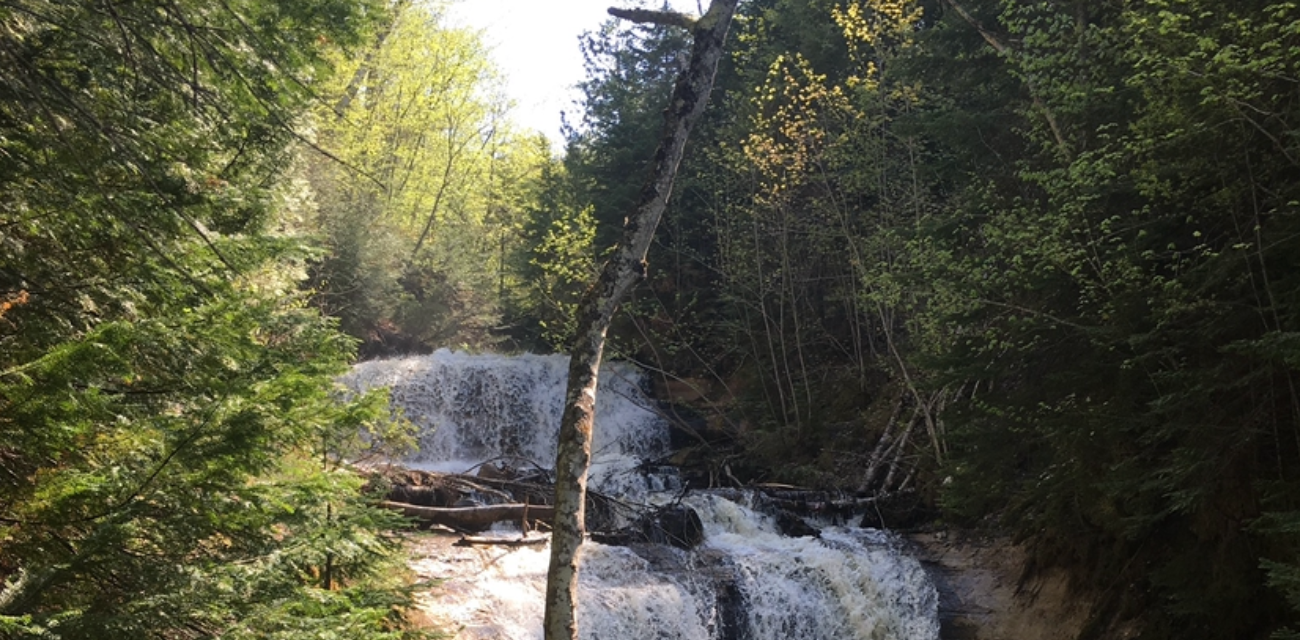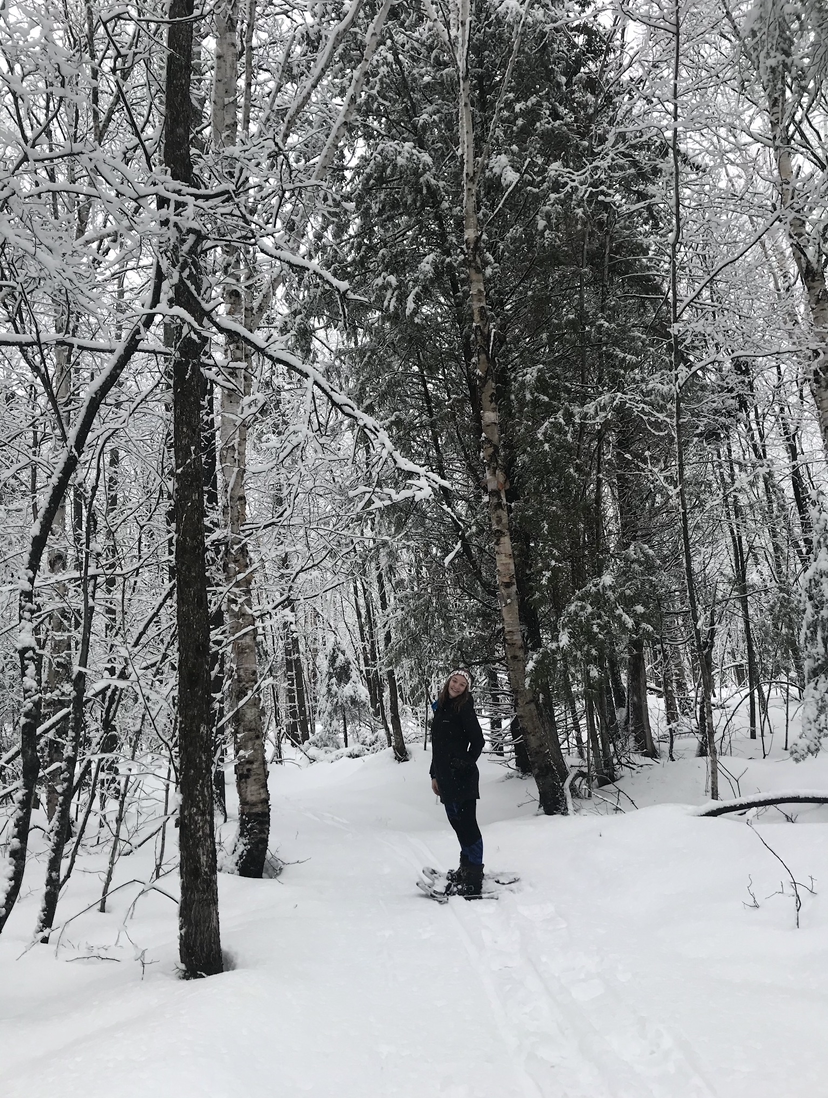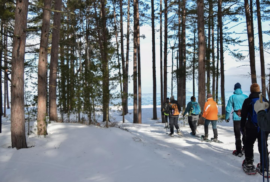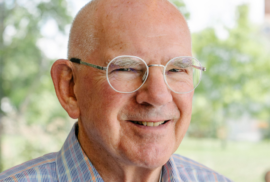Power to the people: energizing Alger County

Authored by

Abby Wallace
Connect With the Experts

Abby Wallace
Ever since I was five years old, my family has always taken summer trips up north to the small town of Grand Marais—nestled in Alger County within Pictured Rocks National Lakeshore, for those unfamiliar with this part of the Upper Peninsula. I now live in beautiful Marquette. Then and now, I love that this pristine, remote part of the Mitten allows me to escape the hustle and bustle of the city and enjoy all the natural beauty that makes our state so special.

But this escape can also be isolating. I remember an instance about 10 years ago when my family had driven six hours up to Grand Marais on a snowy and cold
December evening, only to find the power out across the entire town and our house at a toasty 45 degrees. Luckily, we had a wood-burning stove to fall back on, but if we hadn’t, our options would have been extremely limited. This story goes to show how dangerous an unreliable energy system really is for small communities in our most remote areas.
Climate and energy have been critical focus points not only for the Environmental Council but also for lawmakers and Gov. Whitmer’s administration, but rarely have Michigan’s rural communities been at the center of that conversation.
And energy reliability isn’t the only challenge for these communities. The UP is home to some of the country’s highest electric rates, slow renewable energy buildout, and a population of residents who are disconnected and distrustful of policymakers down state. And despite the fact that most communities across the U.P. face socioeconomic challenges, they are often passed over for funding and investments when it comes to energy projects.
That’s why we were so excited earlier this year when the US Department of Energy opened its highly competitive Energizing Rural Communities Prize challenge. This initiative calls on applicants to formulate partnership plans or innovative financing strategies to help rural or remote communities enhance their energy systems and promote clean energy demonstration projects.
This funding opportunity showcases why our ECOSystem of member organizations is so critical—this isn’t something we as the Environmental Council could tackle alone. We needed a robust coalition with the right knowledge and connections across the UP
So, I started making phone calls. On a tight deadline, with bold strategies in mind, our dream team came together.
Member group Michigan Energy Options serves as our technical expert, developing a data-driven profile of household energy consumption and costs across Alger County, which informs targeted clean energy solutions. Meanwhile, the Environmental Council, member group Upper Peninsula Environmental Coalition, and Alger County Renewable Energy Solutions are working to build a robust community coalition through stakeholder meetings, public community education events, and individual sessions.
We hope to connect individuals and businesses to information on and financial resources for investing in renewable energy and energy efficiency.
These projects could look like local governments installing solar panels on all of their municipal buildings. It could look like a group of citizens coming together to advocate for a community solar installation, or to install panels on their residences to offset their electricity bills. It could also look like energy efficiency retrofit programs that help residents capitalize on the financial savings associated with building weatherization.
In 2023 alone, the Environmental Council successfully passed over $363,100 to members via passthrough grants. It ensures the ECOSystem has the tools it needs to drive real work on the ground and protect the air we breathe, our water, and the places we love.
In July, we learned that our project was among just 55 chosen for funding out of approximately 800 proposals nationwide. The prize not only supports our work in the UP but is also shared amongst the two other member organizations on our project team.
The success of this grant project hinges on seamlessly integrating skills, knowledge, and resources from each partner. The collaborative ecosystem nurtured by the Environmental Council is a testament to our belief that collective action is the most potent catalyst for change. By uniting organizations with diverse strengths and perspectives, the Environmental Council ensures that the project is comprehensive, sustainable, and deeply rooted in the communities it serves.
At its core, this project is not just about transforming energy systems; it’s about empowering communities. Envision Alger County two decades from now: every homeowner who wants rooftop solar has it, along with a battery system so they can use the power they’re generating at their leisure. Those who don’t have an ideal location to install their own solar panels are able to buy power from a solar installation owned by the community, because legislation has passed to allow it. Every building is a sanctuary of coziness and energy efficiency, free from the anxiety of power outages in the harsh winter weather that the UP is known for.
The clean energy workforce has grown to match the demand for renewable installations and home retrofits, and the jobs are plentiful and pay well. As more renewables proliferate the market, costs will be driven down and customers’ utility bills will be reduced. This is my dream for Alger County and for other rural communities across Michigan as we move into the future. The Energizing Rural Communities project is one step to get there.
Interested in becoming an Environmental Council member? Check out environmentalcouncil.org/members or email Abby Wallace at abby@environmentalcouncil.org.
Discover
Power environmental change today.
Your gift to the Michigan Environmental Council is a powerful investment in the air we breathe, our water and the places we love.
Sign up for environmental news & stories.
"*" indicates required fields




